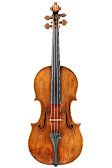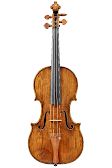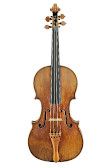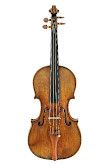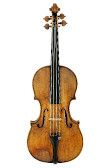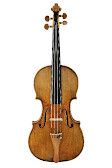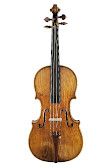Antonio Stradivari
around 1644 to 1737The exact date of Stradivari’s birth could not be verified so far, nor could the findings about his training be corroborated. The earlier literature assumed that he spent his apprenticeship with Nicolò Amati. More recently, training as a woodcarver has also been cited as a possibility. The oldest preserved document relates to his marriage in 1667. Shortly thereafter, the couple moved into a house with a workshop in the center of Cremona. The oldest Stradivari violin known to still exist is dated 1666, but only few instruments from the following years up to 1677 have survived. Moreover, the maker’s labels of most of these early violins were manipulated or removed. Stradivari’s early works show the influence of Amati’s style, but the models and the type of arch are not uniform. Obviously, Stradivari experimented during this period by changing various parameters. Although he is known today exclusively as a maker of instruments from the family of violins, it must not be overlooked that he built guitars, mandolins, harps and at least one viola da gamba. Stradivari was able to buy a house in 1680 at the centrally located Piazza di San Domenico close by the Guarneri and Amati families’ workshops. From 1690, Stradivari experimented with a new form that was several millimeters longer than the standard and is known as the long pattern. Stradivari’s shop produced its best quality from 1700. The predominant, broad model had a very full arch and stands out both for its beauty and its excellent sound, probably also because Stradivari had superb tonewood at his disposal during this period. Both his sons, Francesco (born in 1671) and Omobono (born in 1679), had also completed their training by then, so the workshop’s productivity rose considerably. This period, which lasted until the 1720s, is frequently referred to as Stradivari’s Golden Period. The instruments of the late period have a robust appearance, displaying thickened edges and shallower channels. Apart from some age-related crafting weaknesses, these late instruments also possess a marvelous sound potential. In 1727, Stradivari purchased a family tomb in the Basilica of San Domenico and drew up his last will and testament to bequeath his considerable fortune. In March 1737, Stradivari’s second wife, Antonia, died at the age of 72; Stradivari died in December of that same year, having worked in lutherie until the last year of his life.
Posterity has apotheosized Stradivari as the most famous violinmaker of all times. This has to do both with his long creative life, the large number of instruments extant to this day, the stylistic consistency of his work, the beauty of his instruments and, above all, their superior sound. All surviving violins, violas and violoncellos have been structurally modified over the course of time. The necks were made longer and angled, and longer bass bars were inserted. In connection with the string materials in use today, which allow for higher tension than the original catgut strings, these instruments have a full sound and timbre that makes them ideal concert instruments.

